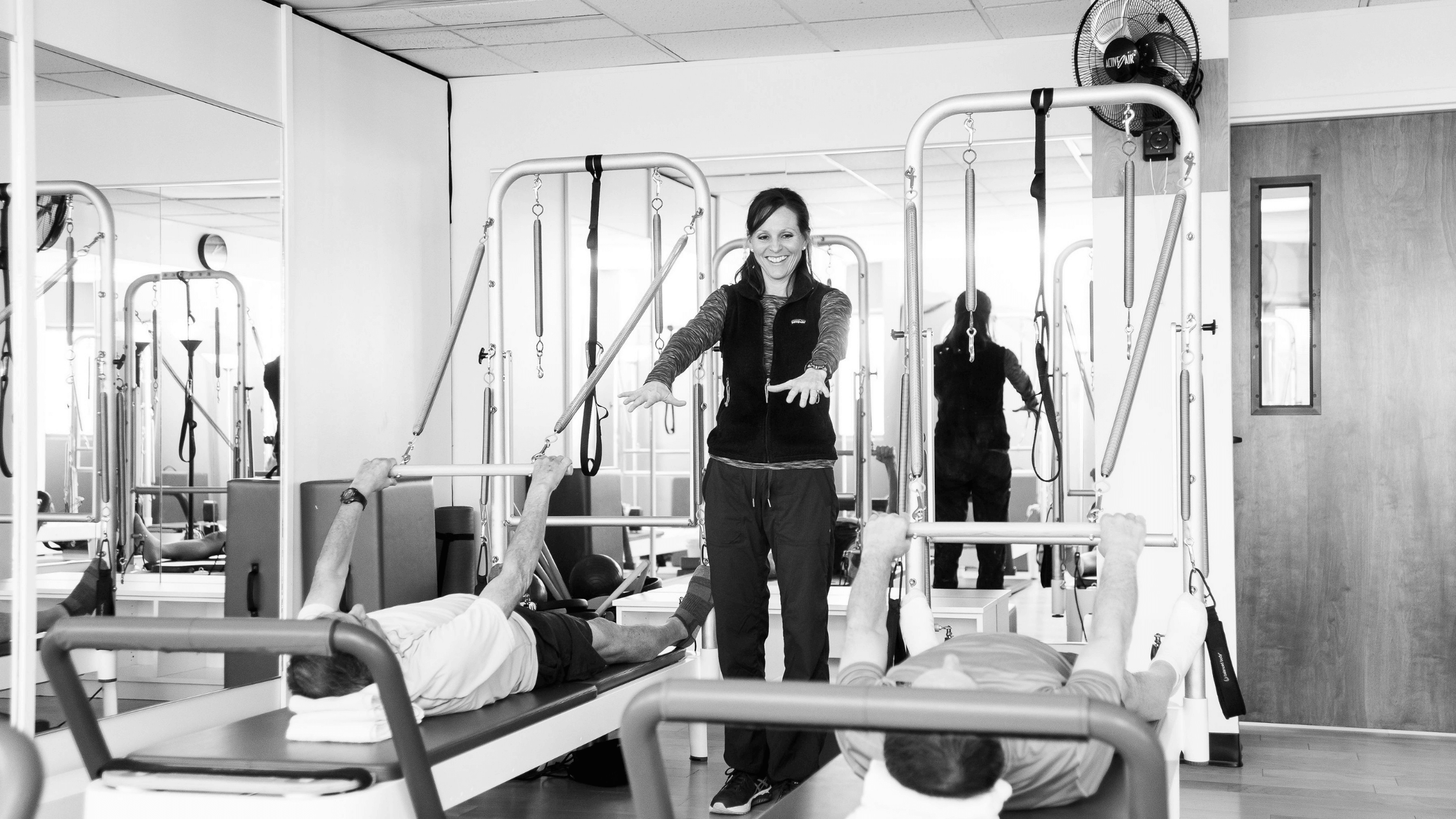What Is Pilates? History, Benefits, and Whether You Should Try It

PT, DPT // Licensed Physical Therapist // CoreAlign Instructor // Lead Pilates Instructor // EW Motion Therapy Homewood
Starting any new fitness practice can be intimidating, especially when you may be new to fitness in general. It can certainly be intimidating to walk into a Pilates studio for the first time and see so many props and other kinds of equipment, like reformers. You may wonder what you have gotten yourself into and reconsider taking the class in the first place. However, before you go back to the treadmill, maybe give a Pilates class a try.
Pilates is not so much a workout program as a movement practice. It can have many benefits besides general fitness, and it can be adapted to fit many different audiences and needs. With its focus on core stabilization, Pilates is a great way to increase awareness of your core and build strength and flexibility throughout the rest of your body.
We cap our Pilates classes at EW Motion Therapy to four participants so that each person can receive personalized advice and attention from our skilled instructors. Even if you choose to take a Pilates class elsewhere, we still want to advise how Pilates can be a great movement practice for anyone.
This article will discuss the history and different types of Pilates, the benefits of the practice, and the unique responsibilities of Pilates instructors. With this information, you can take a Pilates class to see if it is the right practice for you.
History and types
The name of the practice came from its inventor, Joseph Pilates. During his childhood in Germany, Joseph often turned to exercise to remedy his various medical conditions, including asthma and rheumatic fever. He developed his movement regimen based on the classical Greek ideal of a man, which promoted balance in mind, body, and spirit, and that regimen is what we know today as Pilates.
Joseph Pilates created a system of exercises that can be performed on a mat or various equipment. No equipment is required for mat or floor Pilates, but you can use props, including balls, blocks, and rings. Joseph invented what we now know as the reformer. A reformer is a mat on wheels that can be loaded with springs and moved by a strap and pulley system. It adds resistance for strengthening but the springs also assist the movements so that alignment and form can be maintained. There are other pieces of Pilates equipment as well, such as the chair, tower, and ladder barrel.
Each type of Pilates is equally valuable and will result in balanced muscular development, improved posture, and breath awareness. The exercises can be modified so that people of all abilities can participate. The type you choose depends on your goals for your Pilates class.
Benefits
The ultimate goal of Pilates is to facilitate a mind and body connection, including an awareness of breath, and to promote total body integration starting from the core. Let’s break these down to see the benefits of each facet of the practice.
A Pilates class should facilitate a connection between body and mind. The environment should allow for concentration to do the movements so that you can focus on how they make you feel. The goal is for you to take what you learn about your body from the exercises and be aware of how that relates to your movements throughout your day, so you can feel the same sense of concentration and renewed energy anywhere you go.
Breath is one of the body’s most essential functions, and being aware of your breath as you move can help you move more efficiently. Breathing exercises are incorporated into Pilates movements, so you can breathe with the movement and have more control. More breath awareness can also help with stress during your day, as you can slow down and take some deep breaths to manage stress.
Total body integration ensures the movements are fluid and graceful. To an outsider watching an advanced Pilates class, it will appear that the people are moving effortlessly and with control - the movements are not stiff or rigid. A good Pilates practice will incorporate a variety of positions: lying on your back, stomach, and side, getting on your hands and knees, standing, and moving through all planes of movement. Pilates movements are meant to strengthen and lengthen simultaneously. You can improve your posture, relieve aches and pains, and restore balance.
Another great benefit of Pilates is its adaptability. Because you do not have to have any equipment to practice it, virtually anyone can do Pilates, even those with movement dysfunctions or limitations.
Should I do Pilates?
Now you know more about Pilates as a movement practice that can be adapted to fit anyone. For beginners, start with a one-on-one evaluation with a Pilates instructor to make sure the practice is safe for you. Each body is different, and your unique body type may determine the kinds of movements you should focus on in your practice. Most people can start with 2-3 classes per week, but consult an instructor so that you do not take on more than your body can handle. Once you find the Pilates class that works the best for you, you will be on your way to moving more efficiently and finding more balance in your daily life.
At EW Motion Therapy, our Pilates instructors tailor movements to your specific needs. In our small-group classes, each participant can address their needs and goals in a safe and encouraging environment. Want to learn more about Pilates? Click the button below to download our answers to 20 frequently asked questions.


